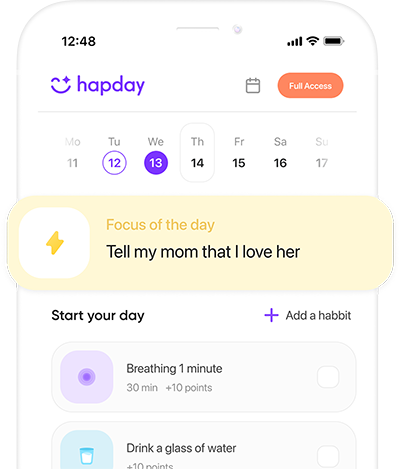Table of Contents
- Understanding the Seven Love Languages
- The Link Between Love Languages and Mental Health
- Applying Love Languages in Everyday Life
- Challenges and Considerations
- Cultivating Lasting Change
- Conclusion
- References
Understanding the Seven Love Languages
Navigating the labyrinth of relationships can be a complex, yet deeply rewarding pursuit. For Gen Z and millennial women balancing the demands of contemporary life, the seven love languages might just be a game-changer. Emerging from Dr. Gary Chapman’s 1992 book, “The Five Love Languages: How to Express Heartfelt Commitment to Your Mate,” this idea has evolved, offering new layers of insight over the years. These languages don’t just enrich personal ties; they also bolster mental health—a real double win.
Before diving into the link between love languages and mental health, let’s lay the groundwork. The seven love languages—Words of Affirmation, Acts of Service, Receiving Gifts, Quality Time, Physical Touch, Emotional Support, and Digital Interaction—essentially serve as a map for showing and receiving affection in varied ways.
1. Words of Affirmation
Ever noticed how words can really impact you? For some, verbal affirmations hit home like nothing else. Compliments and kind words can strengthen connections and elevate self-esteem. Back in 2013, Creswell et al. found positive affirmations could lower stress—a crucial element of mental health.
2. Acts of Service
Sometimes, actions do all the talking. This love language is all about showing love through actions rather than words. Helping out with errands or family chores can go a long way in fostering security and appreciation. These actions can significantly contribute to emotional well-being.
3. Receiving Gifts
Receiving gifts isn’t about materialism, despite popular belief. It’s more about the sentiment behind the gift. A small token can be a lasting reminder of love and care, elevating happiness and curbing stress.
4. Quality Time
Amongst life’s constant bustle, devoting quality time to someone can be a real treasure. This love language emphasizes being present, truly present. Research in 2010 (Holt-Lunstad et al.) suggested that quality time could lessen symptoms of depression and anxiety. And who doesn’t need that?
5. Physical Touch
We are, at our cores, tactile creatures. Physical touch—from hugs to pats on the back—can offer immense comfort. Field in 2010 showed that touch releases oxytocin, aiding in stress reduction and instilling a sense of safety.
6. Emotional Support
Moving beyond Chapman’s original five, emotional support involves being there for someone during tough times. It means listening patiently, empathizing, and understanding—a vital component of mental resilience.
7. Digital Interaction
In our digitally-driven world, maintaining bonds through technology is increasingly crucial. This love language recognizes the role of messages, social media, and video calls in offering reassurance and connection despite physical distances.
The Link Between Love Languages and Mental Health
Applying these love languages can transform mental health, offering pathways to emotional stability and more robust interpersonal connections.
Boosting Self-Esteem
Recognizing and responding to a partner’s love language can notably lift self-esteem. Feeling understood elevates self-worth, countering inadequacy and depression. Neff and Geers (2013) highlighted relational esteem as a buffer against stress.
Enhancing Emotional Resilience
Emotional resilience, or the capacity to adapt under stress, can be reinforced through these love languages. Strong support networks offer emotional cushioning, testing our mental mettle while softening stressors’ blows.
Reducing Anxiety and Depression
Feeling emotionally content and secure in relationships can decrease anxiety and depression. Teo et al.’s research (2013) showed strong social bonds are linked with lower anxiety and depression levels.
Promoting Mindfulness and Presence
Languages like Quality Time and Acts of Service bolster mindfulness, urging us to live in the moment. Worry is often future-focused; these practices pull us back into the now.
Applying Love Languages in Everyday Life
To reap the benefits of the seven love languages, it’s key to make them part of daily routines. Here’s how:
Words of Affirmation
- Daily Compliments: Make complimenting your partner a daily habit. Focus on genuine, specific affirmations.
- Written Notes: Leave heartfelt notes in unexpected spots, reinforcing appreciation.
Acts of Service
- Chore Sharing: Take on household tasks to demonstrate care through action.
- Unexpected Help: Surprise your partner by anticipating needs—maybe cook dinner or run an errand for them.
Receiving Gifts
- Thoughtful Tokens: Give small, meaningful gifts—like a favorite snack or book.
- Occasional Surprises: Plan outings or experiences to create lasting memories.
Quality Time
- Scheduled Dates: Set regular date nights, free from distractions.
- Shared Activities: Engage in hobbies or activities you both enjoy.
Physical Touch
- Affectionate Gestures: Add more hugs, kisses, and touches daily.
- Physical Activities: Try activities that involve touch, such as dancing.
Emotional Support
- Active Listening: Practice listening without interrupting.
- Open Communication: Encourage dialogue about feelings and emotions.
Digital Interaction
- Check-ins: Send texts or make video calls to stay connected.
- Social Media Engagement: Engage positively with your partner’s social media.
Challenges and Considerations
Love languages can enhance mental health, but hurdles exist in their application.
Recognizing Different Love Languages
Not everyone expresses love the same way. Having regular chats about each other’s love languages can help bridge gaps in understanding.
Balancing Individual Needs
Balancing your needs with your partner’s is crucial. Compromise is key to enhancing relationship satisfaction.
Overcoming Resistance
Skepticism towards love languages can occur due to past experiences. Patience and gradual integration help.
Cultivating Lasting Change
Cultivating lasting change means commitment, consistency, and adaptability.
Commitment to Growth
Nurture growth by understanding each other’s evolving needs. It promotes resilience.
Consistent Practice
Make love languages an integral part of your relationship. Consistency builds trust.
Willingness to Adapt
As life’s circumstances shift, so might love languages. Flexibility keeps the relationship fulfilling.
Conclusion
Understanding and deploying the seven love languages can deeply influence relationships and mental health. Through Words of Affirmation, Acts of Service, Receiving Gifts, Quality Time, Physical Touch, Emotional Support, and Digital Interaction, individuals can nurture deeper connections. For Gen Z and millennial women, integrating these principles provides a science-backed route to more meaningful and secure relationships.
Ready to unlock the full potential of your relationships? Discover how the Hapday app can assist in incorporating love languages for enhanced mental health and stronger bonds.
References
- Creswell, J. D., et al. (2013). Mindfulness-Based Stress Reduction and Health Benefits: A Meta-analysis. Journal of Psychosomatic Research.

